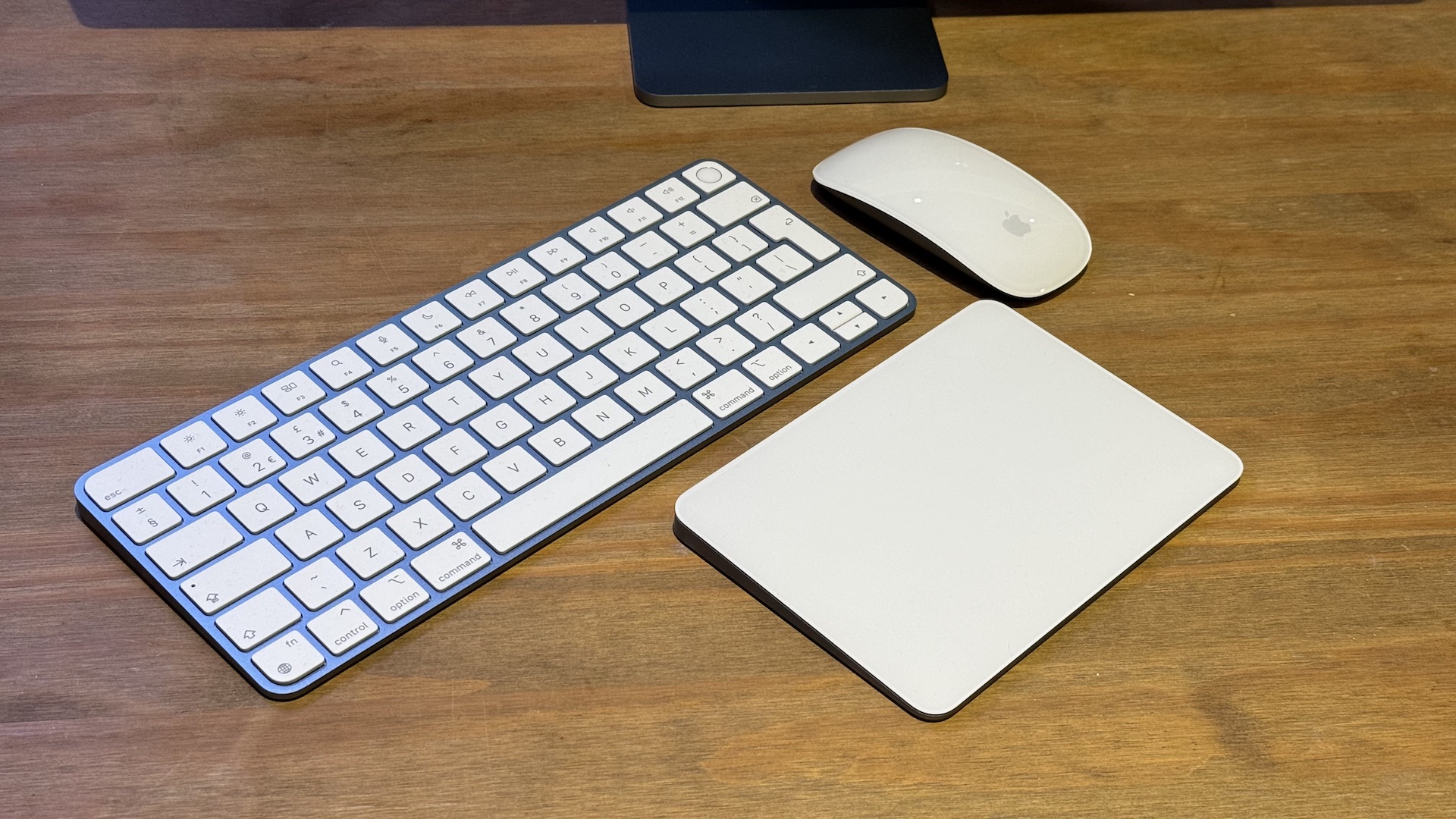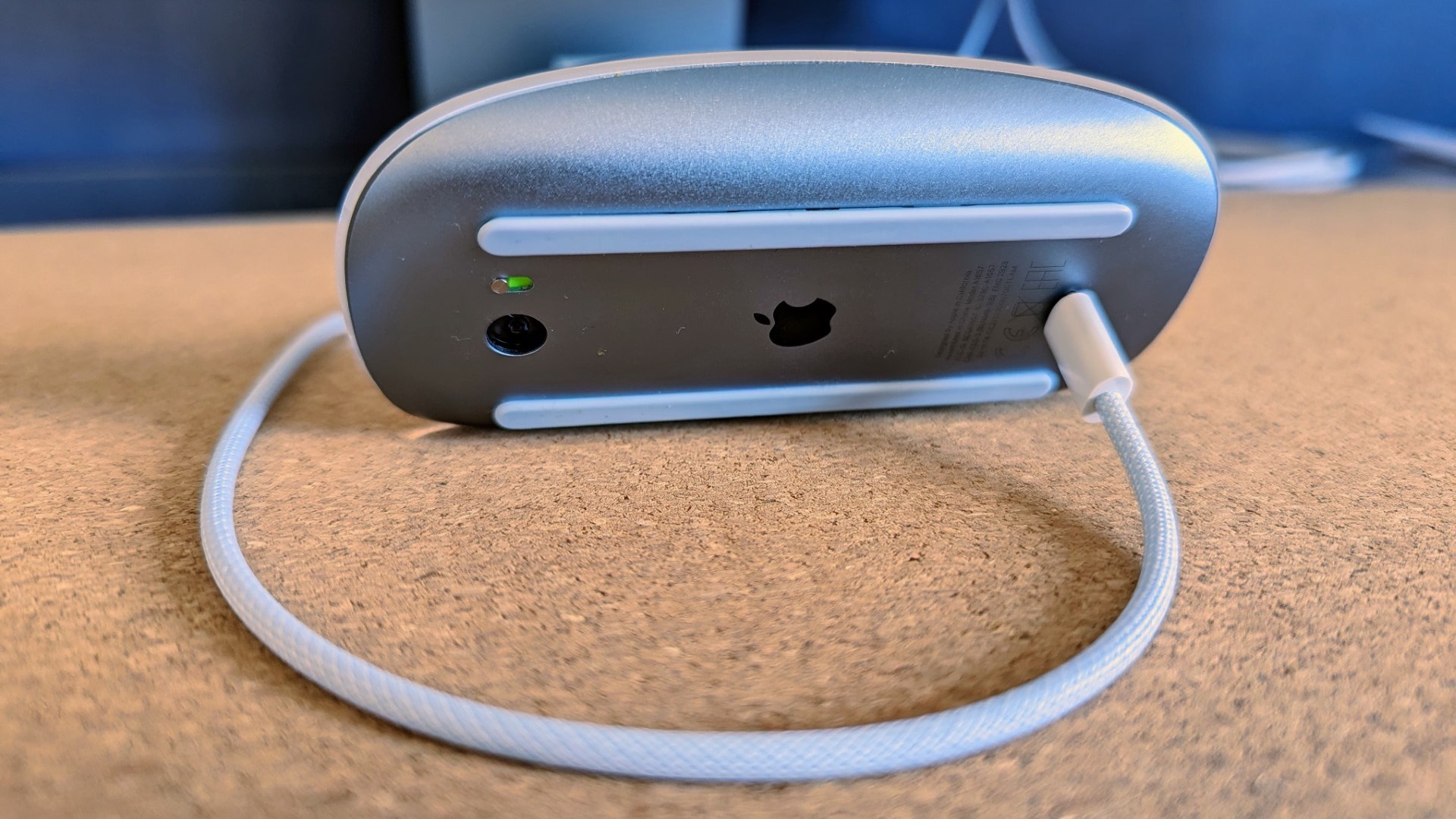Apple could fix the Magic Mouse's biggest problem with this patent, and it isn't the Lightning port on the bottom
Apple's next Magic Mouse might have a special new feature you've seen before.

The Magic Mouse has been around in various iterations for a number of years now, and it's more than you might think. The first Magic Mouse arrived in October of 2009 and has been roundly mocked ever since. But a new model might be on the horizon that will fix a huge issue that some people had with the Magic Mouse that's on sale today. The problem? It won't fix the problem that you're thinking about.
The Magic Mouse is of course Apple's first-party pointing device for those who prefer to use a mouser rather than a trackpad, something Apple also sells under the Magic Trackpad branding. But the Magic Mouse has its problems, including the fact that it's charged using a Lightning cable that plugs into a port on its belly. And yes, that means that you have to turn the whole thing over just to charge it. And yes, that means that you can't use the Magic Mouse while it charges. But that isn't even the biggest problem.
The biggest problem, for some at least, is that the Magic Mouse is one big button with touch-sensitive areas that act as areas designated for left and right mouse clicks. But the whole surface of the mouse moves when you click it, and people with meatier hands find that their skin gets caught every single time they click. And that sucks. But thankfully a patent might have the answer in the form of Force Touch.
Force Touch to the rescue
Force Touch is of course the feature that is already used on the Magic Trackpad and allows its surface to remain static when a click is performed. Instead, like the Magic Trackpad built into Apple's laptops, the force of a finger is registered and a click is performed. The 'click' that you feel is generated by a Taptic Engine, simulating the feel of a button moving. Notably, it's this same system that is expected to power the capacitive Action Button rumored for the iPhone 16 lineup.
Now, Patently Apple reports that Apple has updated its Force Touch patent to protect the feature's use on pointing devices like the Magic Mouse. It's also important to remember that Apple already has a similar Magic Mouse Force Touch patent from back in 2016, too. And while neither of these patents guarantees that a new Magic Mouse is on the way, they certainly don't disprove it, either. And being able to use a Magic Mouse without hurting myself each and every time I click sounds like a great improvement to me.
Magic Mouse changes are afoot regardless

Apple will have to update the Magic Mouse sooner rather than later anyway, even if it doesn't add Force Touch support this time around. Apple's move away from Lightning and towards USB-C is still underway, and it's racing against the EU's clock. Computer accessories like the Magic Mouse fall under the same common charger rules that meant the iPhone 15 switched to USB-C this year. And while Apple did release an updated M3 iMac recently, that too comes with Lightning-powered accessories.
It isn't yet clear when Apple will update its remaining Lightning accessories, but when it does we can only hope for two things; Force Touch coming to the Magic Mouse and the USB-C port being somewhere — anywhere — other than where the Lightning cable plugs in today.
iMore offers spot-on advice and guidance from our team of experts, with decades of Apple device experience to lean on. Learn more with iMore!
I don't think either of those things is too much to ask, do you?
More from iMore

Oliver Haslam has written about Apple and the wider technology business for more than a decade with bylines on How-To Geek, PC Mag, iDownloadBlog, and many more. He has also been published in print for Macworld, including cover stories. At iMore, Oliver is involved in daily news coverage and, not being short of opinions, has been known to 'explain' those thoughts in more detail, too.
Having grown up using PCs and spending far too much money on graphics card and flashy RAM, Oliver switched to the Mac with a G5 iMac and hasn't looked back. Since then he's seen the growth of the smartphone world, backed by iPhone, and new product categories come and go. Current expertise includes iOS, macOS, streaming services, and pretty much anything that has a battery or plugs into a wall. Oliver also covers mobile gaming for iMore, with Apple Arcade a particular focus. He's been gaming since the Atari 2600 days and still struggles to comprehend the fact he can play console quality titles on his pocket computer.
